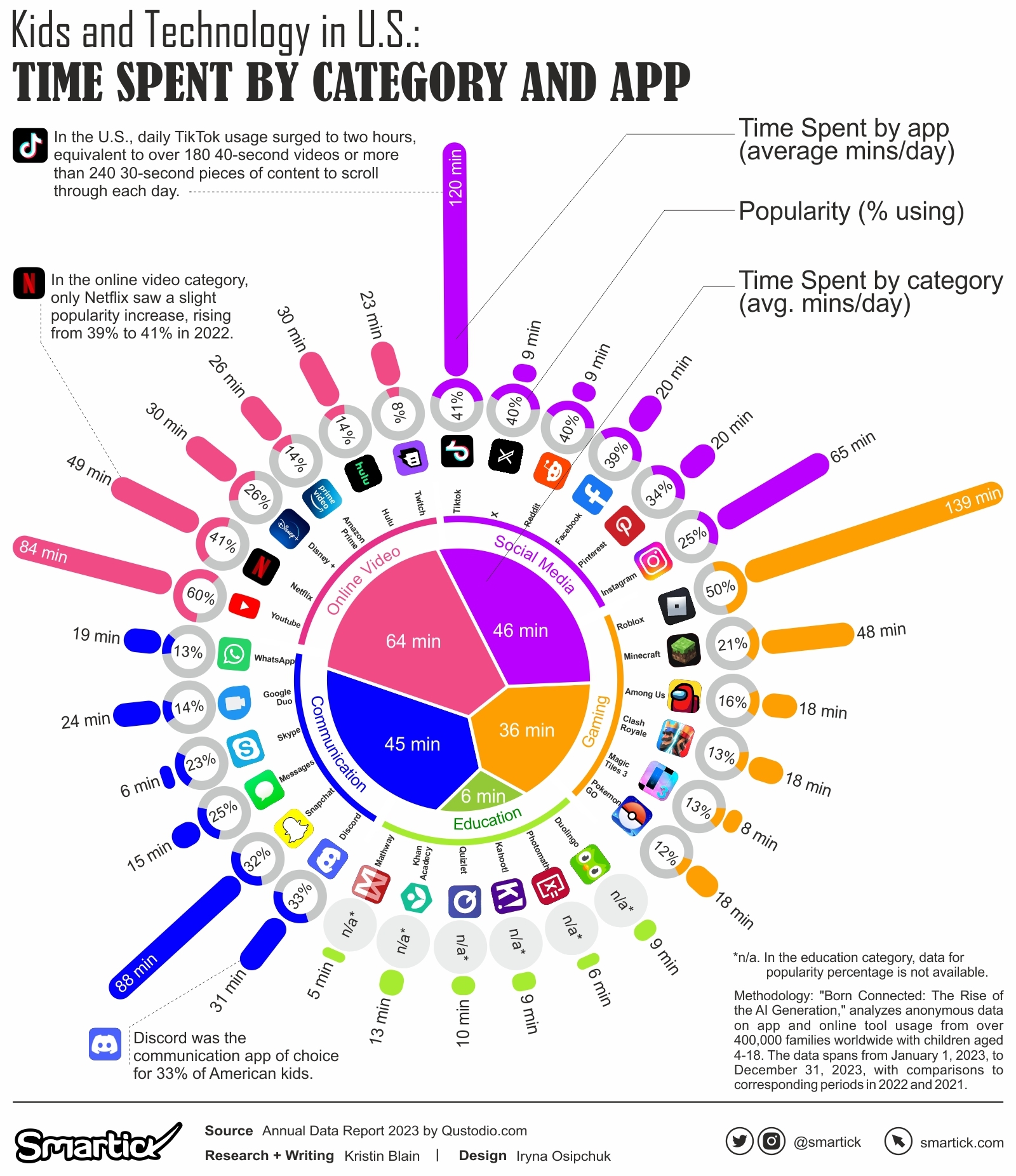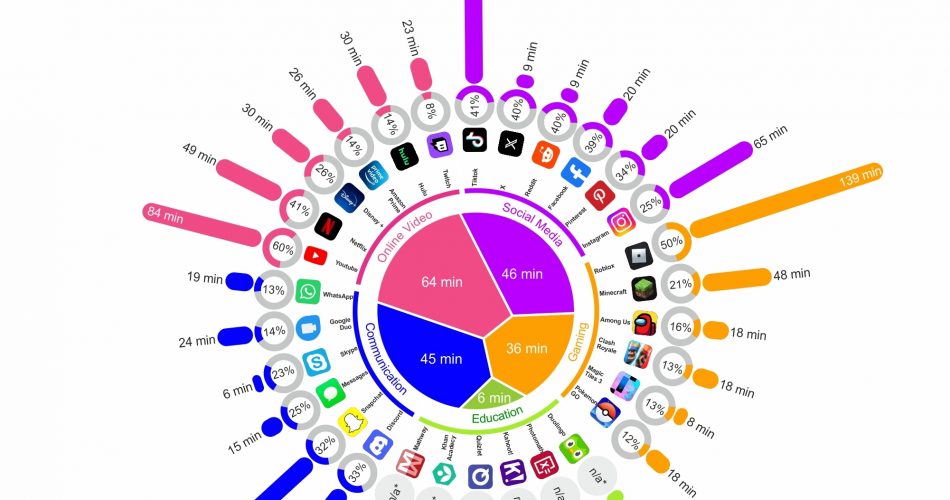
In the ever-expanding digital landscape, kids are diving into the online world like never before. A recent report by Qustodio sheds light on the tech habits of the AI generation, offering insights into the apps they use, the time they spend, and the concerns parents grapple with. Let’s take a closer look at the fascinating findings that uncover the digital journey of our young tech-savvy explorers.

Qustodio’s research into the digital lives involved over 400,000 families worldwide with kids aged 4-18. The data spans from January 1, 2023, to December 31, 2023, with comparisons to the previous two years and an extended look back to 2019 and 2020.
Qustodio’s meticulous methodology involves anonymous app and online tool usage data from diverse families, providing a comprehensive look at children’s digital behavior. The report takes into account various devices, from mobiles to desktops, offering a holistic view of the digital landscape.
App Categories and Classification
The report by Quostodio categorizes kids’ digital adventures into five buckets: online video, social media, gaming, education, and communication. For simplicity’s sake, each app gets a one-category label, although some are multitasking champs.
Time Spent on Online Video Apps
When it comes to online video, YouTube continues its reign as the ultimate content hub for kids, clocking in an impressive 84 minutes per day on average. This video giant is a go-to for everything from educational content to entertainment. Notably, Twitch is carving its niche, witnessing a steady rise with 23 minutes daily, suggesting a growing interest in live streaming and interactive content among the younger audience.
Time Spent on Online Social Media Apps
In the realm of social media, TikTok emerges as the undisputed champion, captivating kids for a staggering 120 minutes each day. The app’s short-form videos and viral trends have become a cultural phenomenon. Facebook and Instagram also hold their ground, but TikTok’s dominance reflects a shift in how kids engage with social platforms, favoring quick, engaging, and visually appealing content.
Time Spent on Gaming Apps
Gaming takes center stage, with Roblox leading the charge, claiming a significant chunk of kids’ time with an average of 139 minutes per day. The open-world gaming platform provides endless possibilities for creativity and social interaction. Minecraft and Among Us also make their mark, showcasing the diverse gaming preferences of the younger generation, ranging from exploration to collaborative online experiences.
Time Spent on Education Apps
In the education category, Duolingo, Kahoot!, and Khan Academy emerge as the digital heroes, capturing the attention of young learners for essential minutes each day. These platforms showcase a positive trend of kids embracing educational tools voluntarily, emphasizing the potential for technology to play a constructive role in supplementing traditional learning methods.
Time Spent on Communication Apps
When it comes to communication, Discord takes the lead with 31 minutes per day, reflecting the popularity of this platform among kids for chatting and connecting with peers. Snapchat and WhatsApp also find their place in the communication landscape, highlighting the varied ways in which kids prefer to stay connected in the digital age. This category underscores the importance of online communication tools in shaping young social interactions.
Schools and Families: Building Safer Online Spaces
Zooming into school hours, educational apps and websites are gaining traction. Qoria Group’s insights from 10,000 schools globally show tech integration in the classroom. Parents, with 950 surveyed, spill the beans on managing tech at home. Qustodio also gets inputs directly from 100 insightful kids aged 10-13, sharing their unique digital experiences.
In wrapping up this tech exploration, kids spent 60% more time on TikTok than YouTube last year. The digital landscape is ever-evolving, and parents are navigating the uncharted territory with concerns about online safety. The report not only uncovers the trends but also highlights the need for a tech-savvy parenting approach. Hats off to all the parents, guardians, and kids who contributed to unraveling this digital mystery!

